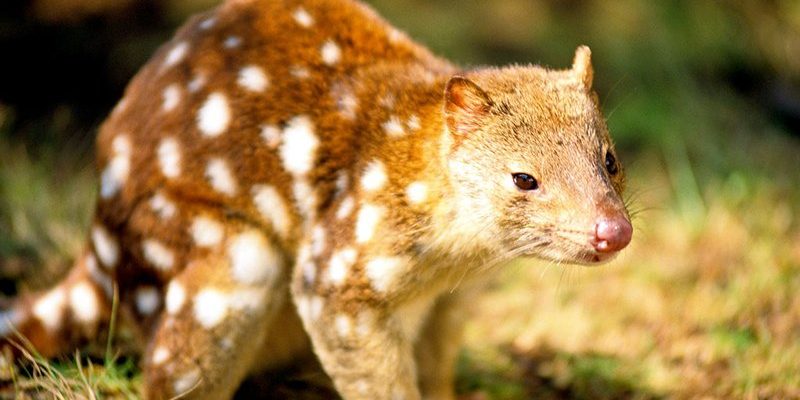![Comparing The Quoll Vs. [Similar Species]](https://gudri.com/wp-content/uploads/2025/06/Comparing_The_Quoll_Vs___Similar_Species__image_0.jpg)
Imagine sitting in a café and discussing the differences between these two intriguing marsupials. You might wonder about their diets, behaviors, habitats, and just how they contribute to their ecosystems. Let’s explore these fascinating animals side by side and see what makes them stand out from one another.
Physical Appearance: Differences and Similarities
When it comes to physical traits, quolls and Tasmanian Devils couldn’t be more different. Quolls are small to medium-sized marsupials with a distinctive spotted coat, which can range in color from brown to black. They have long, agile bodies and short, rounded ears. Typically, quolls measure about 30 to 70 centimeters in length, with males being slightly larger than females.
In contrast, the Tasmanian Devil is much bulkier and more robust, boasting a stocky body and strong jaws. With a length of 50 to 80 centimeters, they often weigh between 5 to 12 kilograms. Their short legs give them a lumbering gait, but make no mistake—these creatures can move surprisingly fast when they need to. The dark fur of Tasmanian Devils is often marked by white patches across their chest and face, adding to their striking appearance.
So, while quolls have that sleek and nimble appearance, Tasmanian Devils flaunt a more muscular build. Both animals showcase their own unique beauty, reflecting their adaptations to different lifestyles in the wild.
Behavioral Differences: A Day in the Life
You might be surprised to learn that quolls and Tasmanian Devils have different routines and social behaviors. Quolls are primarily solitary creatures. They tend to be nocturnal, which means they’ve adapted to a lifestyle that involves being most active at night. During the day, you’ll typically find them resting in hollow logs or crevices, hiding out of sight from potential threats.
On the other hand, Tasmanian Devils are known for their more social interactions, especially when it comes to feeding. They are scavengers by nature, often gathering in groups to feast on carrion. Imagine a dinner party where everyone is invited; that’s similar to how these animals approach a meal. Their social structure can lead to some fierce competitions, as they’re known for their loud growls and growls when fighting over food.
This difference in behavior plays a significant role in how each species interacts with its environment and other animals. While quolls might prefer the quiet nightlife, Tasmanian Devils embrace a more communal approach to survival.
Dietary Habits: What’s on the Menu?
When it comes to eating, both quolls and Tasmanian Devils have their own culinary preferences. Quolls are primarily carnivorous and tend to hunt for insects, small mammals, and birds. Think of them as the agile hunters of the night, sneaking through the underbrush to catch their prey. Their sharp claws and keen senses make them adept at spotting dinner even in low-light conditions.
In contrast, Tasmanian Devils eat almost anything, operating as the ultimate scavengers. They feed on the remains of dead animals, including livestock and roadkill. Their powerful jaws allow them to crush bones and access nutritious marrow, which is essential for their health. Imagine being the clean-up crew of the forest; that’s what Tasmanian Devils do for their ecosystem.
Both creatures play an important role in maintaining their habitats. Quolls help control small mammal populations, while Tasmanian Devils help manage carrion and prevent the spread of disease.
Habitat Preferences: Where to Find Them
Understanding where these animals thrive helps us appreciate their unique lifestyles. Quolls are adaptable and can be found in a variety of environments—from forests to grasslands. They prefer habitats with plenty of cover, like dense vegetation, which provides safety from predators and plenty of hunting opportunities.
Conversely, Tasmanian Devils are more specialized in their habitat choice. They thrive in forests, woodlands, and scrublands, primarily found in Tasmania. These areas provide the food resources they need and the space to roam, as they can travel vast distances in search of meals.
The differences in habitat preferences reflect how each species has evolved to adapt to their environments, ensuring their survival in the wild.
Conservation Status: Threats and Efforts
Both quolls and Tasmanian Devils face significant threats in the wild, though the nature of those threats varies. Quolls, especially the Eastern and Northern species, are at risk due to habitat destruction and competition with introduced species, such as cats and foxes. Conservation efforts include habitat restoration and breeding programs to help increase their population numbers.
Tasmanian Devils are currently facing an even more serious situation. They have been severely impacted by a contagious cancer called Devil Facial Tumor Disease (DFTD), which has devastated their numbers in recent years. Conservationists are working hard to monitor populations and develop strategies to combat this disease, including breeding resistant animals in captivity.
Understanding and addressing these threats is vital for preserving both species and maintaining the delicate balance of their ecosystems.
Final Thoughts: Symbol of Australia’s Wildlife
In the grand tapestry of Australia’s wildlife, both quolls and Tasmanian Devils represent the diverse and unique ecosystems of the continent. While they share some similarities, their differences highlight the rich variety of life found here.
From their appearances and diets to their behaviors and conservation challenges, exploring these fascinating creatures reveals how each plays a crucial role in their environment. As we continue to learn about them, we also become more aware of the importance of protecting their habitats and ensuring their survival for future generations. So, whether you’re more of a quoll person or a Tasmanian Devil fan, there’s no denying the impact these animals have on Australia’s natural heritage.

